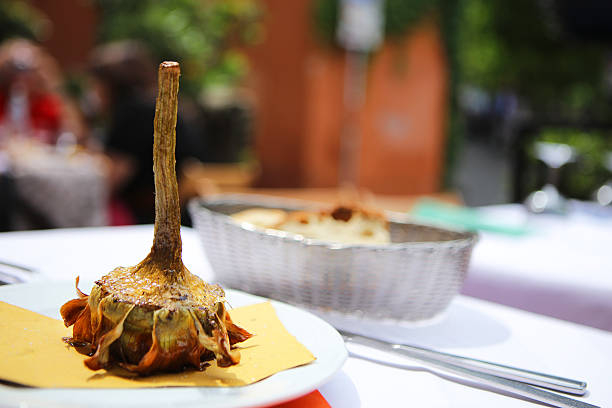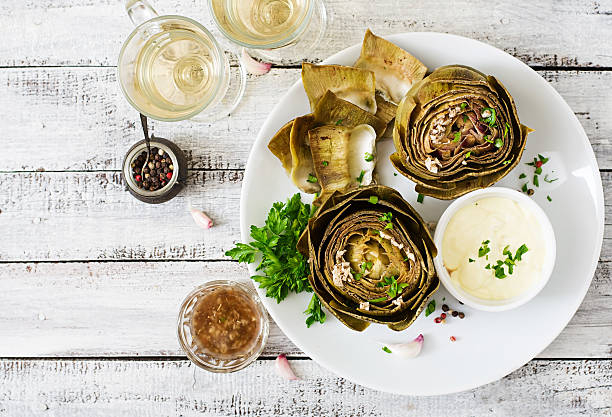Artichokes
According to National Geographic, artichokes first appeared on Greco-Roman tables as early as 2,500 years ago. Artichokes are the edible flower buds of a thistle plant that is native to the Mediterranean regions of North Africa, Italy, and Greece. During the Roman Empire and the Renaissance, when the flower bud was revered as an aphrodisiac, artichokes developed into a mainstay on Roman banquets. According to Britannica, artichokes are still regarded for their distinct robust flavor and rustic texture in addition to being high in potassium, vitamin C, and fiber. According to Falstaff, the internal downy choke that must be removed before consuming the sensitive heart is absent from the Roman artichoke variety known as the carciofi romaneschi.
Carciofi alla giudia, as the meal is known there, is a crispy, twice-deep-fried artichoke that is served with lemon. It is especially well-liked in Trastevere, Rome's former Jewish neighborhood. According to "Tasting Rome", the traditional Roman artichoke preparation, carciofi alla Romana, flavors the tender artichoke hearts by cooking them slowly with lots of garlic and flavorful herbs. The flavorful artichoke hearts can then be mashed into a rough paste to be spread on bruschetta or incorporated into pasta dishes. Marinated artichoke hearts are frequently found on antipasti platters, and finely minced artichoke hearts blended with Pecorin















